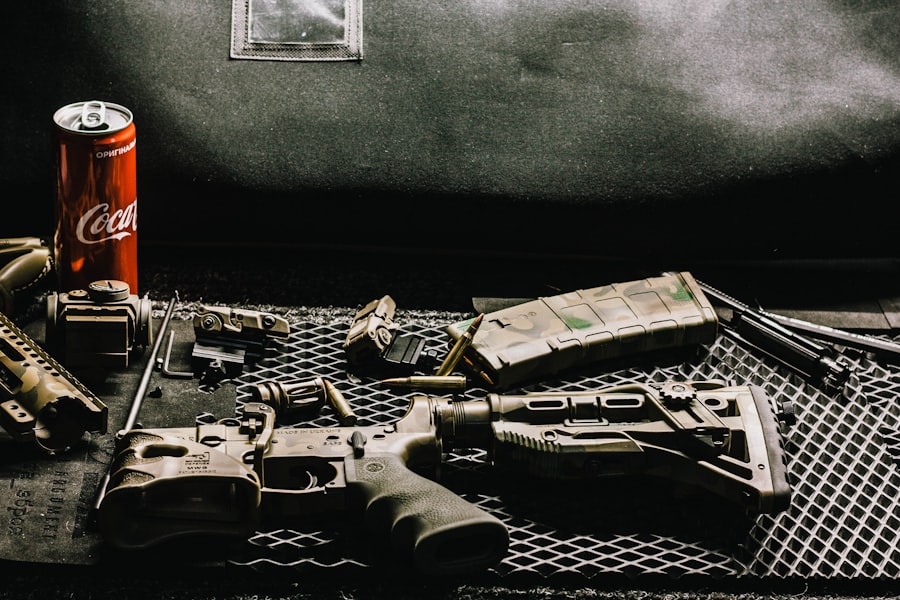Throughout history, the interplay between inexpensive arms and costly armor has shaped the landscape of warfare. This dynamic has often dictated the outcomes of battles, influenced military strategies, and determined the fate of empires. Inexpensive arms, which can be produced and distributed at a lower cost, have frequently proven to be effective against the heavy, elaborate armor that once dominated the battlefield.
The historical narrative is rich with examples of how these two forces have clashed, revealing a constant evolution in military technology and tactics. The tension between these two elements is not merely a tale of weaponry; it reflects broader themes of accessibility, innovation, and adaptability in warfare. As societies evolved, so too did their approaches to combat, leading to a cycle where the rise of one often precipitated the decline of the other.
This article will explore the historical trajectory of inexpensive arms and costly armor, examining their rise and fall through various epochs of warfare.
Key Takeaways
- The historical battle between inexpensive arms and costly armor has shaped warfare throughout the ages.
- From slingshots to firearms, the rise of inexpensive arms revolutionized the way wars were fought.
- Costly armor once dominated ancient warfare, but it eventually fell to the role of inexpensive arms in medieval battles.
- The age of gunpowder saw a significant impact of inexpensive arms, leading to the triumph of colonial warfare.
- Inexpensive arms continue to play a crucial role in modern warfare, evolving from rifles to missiles and shaping the future of military strategy.
The Rise of Inexpensive Arms: From Slingshots to Firearms
Inexpensive arms have a long and storied history, beginning with rudimentary weapons like slingshots and progressing to more sophisticated firearms.
Made from readily available materials, slingshots allowed individuals to engage in warfare without the need for extensive training or resources.
This accessibility made them a popular choice among common soldiers and even civilians during conflicts. As time progressed, the development of firearms marked a significant turning point in the realm of inexpensive arms. The invention of gunpowder in the 9th century led to the creation of hand cannons and later muskets, which were relatively easy to produce compared to the intricate craftsmanship required for armor.
Firearms democratized warfare by enabling less affluent soldiers to wield significant firepower, thus altering the balance of power on the battlefield. The rise of these weapons not only changed individual combat but also transformed entire military strategies, as armies began to prioritize mobility and firepower over traditional formations reliant on heavy armor.
The Dominance of Costly Armor in Ancient Warfare

In contrast to the rise of inexpensive arms, costly armor played a pivotal role in ancient warfare. For centuries, heavily armored soldiers—such as knights in Europe or hoplites in Greece—dominated the battlefield. This armor was often a symbol of wealth and status, crafted from expensive materials like bronze or iron and requiring skilled artisans for production.
The effectiveness of such armor lay in its ability to protect warriors from various forms of attack, allowing them to engage in close combat with a significant advantage. The reliance on costly armor also shaped military tactics and formations. Armies would often deploy heavily armored units at the front lines, relying on their resilience to absorb enemy fire while lighter troops flanked or supported them.
This strategy created a formidable wall of defense that was difficult for opponents to breach. However, as history would show, this dominance was not destined to last forever. The emergence of inexpensive arms began to challenge the very foundations upon which costly armor was built.
The Fall of Costly Armor: The Role of Inexpensive Arms in Medieval Battles
| Armor Type | Cost | Effectiveness |
|---|---|---|
| Plate Armor | High | High |
| Chainmail | Medium | Medium |
| Leather Armor | Low | Low |
| Brigandine | Medium | High |
The medieval period marked a significant turning point in the relationship between inexpensive arms and costly armor. As firearms became more prevalent on the battlefield, their effectiveness against traditional armor became increasingly apparent. The introduction of gunpowder weapons rendered many forms of heavy armor obsolete, as even the most well-crafted suits could not withstand the impact of a musket ball or cannon fire.
This shift forced military leaders to reconsider their strategies and adapt to a new reality where mobility and firepower took precedence over traditional defensive measures. In battles such as Agincourt in 1415, the effectiveness of longbows—an inexpensive arm—against heavily armored knights illustrated this transformation vividly. English archers decimated French cavalry before they could close in for hand-to-hand combat, showcasing how inexpensive arms could decisively alter the course of a battle.
As armies began to recognize the limitations of costly armor, they increasingly turned to lighter, more mobile units equipped with firearms and ranged weapons, marking a significant decline in the reliance on heavy armor.
The Impact of Inexpensive Arms in the Age of Gunpowder
The Age of Gunpowder heralded a new era in warfare characterized by the widespread use of firearms and artillery. This period saw an exponential increase in the production and effectiveness of inexpensive arms, fundamentally altering military engagements across Europe and beyond. The ability to mass-produce firearms allowed even smaller nations or factions to field armies capable of challenging larger forces equipped with traditional armor.
The impact was profound; battles were no longer solely determined by the strength of armored knights or elite troops but by the strategic deployment of infantry armed with muskets and cannons. The battlefield became a space where tactics evolved rapidly, with formations designed to maximize firepower rather than rely on heavy cavalry charges. The effectiveness of inexpensive arms during this period not only changed how wars were fought but also influenced political dynamics, as nations recognized that military power could be achieved through innovation rather than sheer wealth.
The Triumph of Inexpensive Arms in Colonial Warfare

As European powers expanded their empires during the colonial era, inexpensive arms played a crucial role in their military successes. The ability to equip large numbers of soldiers with firearms allowed colonial forces to dominate indigenous populations who often relied on traditional weapons or outdated forms of combat. This disparity in armament highlighted how inexpensive arms could tip the scales in favor of those who possessed them.
The use of firearms in colonial warfare also underscored the strategic advantages that came with mobility and range. European armies could engage enemies from a distance, utilizing tactics that emphasized rapid movement and surprise attacks rather than direct confrontations with heavily armored foes. This shift not only facilitated territorial expansion but also established a precedent for future conflicts where technological advancements would continue to play a decisive role.
The Role of Inexpensive Arms in Modern Warfare
In modern warfare, inexpensive arms have continued to evolve while maintaining their significance on the battlefield. The development of automatic weapons and advanced infantry systems has further democratized access to firepower, allowing even non-state actors or insurgent groups to challenge conventional military forces effectively. This shift has led to asymmetric warfare scenarios where smaller groups can leverage inexpensive arms against larger, more technologically advanced armies.
As seen in various conflicts around the world, including guerrilla warfare and urban combat scenarios, the ability to deploy effective yet affordable weaponry has become a cornerstone of modern military operations.
The Evolution of Inexpensive Arms: From Rifles to Missiles
The evolution of inexpensive arms has been marked by significant technological advancements that have transformed their nature and effectiveness. From early rifles that replaced muskets to modern missile systems capable of precision strikes, the trajectory has been one of continuous improvement aimed at maximizing lethality while minimizing costs. Innovations such as mass production techniques have made it possible for nations to equip their forces with advanced weaponry without incurring prohibitive expenses.
Moreover, this evolution has led to an increased focus on developing dual-use technologies that can serve both military and civilian purposes. As nations invest in research and development for inexpensive arms, they often find applications that extend beyond traditional warfare, influencing industries ranging from aerospace to telecommunications. This interconnectedness highlights how advancements in inexpensive arms can have far-reaching implications beyond the battlefield.
The Decline of Costly Armor in Military Strategy
As inexpensive arms have continued to evolve and dominate modern warfare, costly armor has seen a marked decline in relevance within military strategy. While some forms of protective gear remain essential for certain roles—such as body armor for infantry—the heavy plate armor that once defined battlefields has largely disappeared from contemporary military doctrine. This shift reflects an understanding that mobility, speed, and adaptability are paramount in modern conflicts.
The decline of costly armor also signifies a broader trend toward more flexible military structures that prioritize rapid response capabilities over traditional formations reliant on heavily armored units. As armies adapt to new threats posed by asymmetric warfare and unconventional tactics, they increasingly recognize that investing in advanced technology and training is more effective than relying on outdated concepts rooted in costly armor.
The Future of Warfare: Inexpensive Arms and Technological Advancements
Looking ahead, the future of warfare appears poised for further transformation driven by advancements in inexpensive arms technology. Innovations such as drones, smart munitions, and cyber capabilities are reshaping how conflicts are conducted while maintaining an emphasis on affordability and accessibility. As these technologies become more widespread, they will likely empower smaller nations or non-state actors to challenge established powers effectively.
Moreover, as military budgets face constraints globally, there is an increasing impetus for nations to invest in cost-effective solutions that maximize operational efficiency without sacrificing effectiveness. This trend suggests that inexpensive arms will continue to play a central role in shaping future conflicts as militaries seek innovative ways to leverage technology while remaining agile on the battlefield.
The Enduring Legacy of Inexpensive Arms in Defeating Costly Armor
The historical battle between inexpensive arms and costly armor has left an indelible mark on the evolution of warfare. From ancient slingshots to modern firearms and advanced technologies, inexpensive arms have consistently demonstrated their ability to challenge established norms and reshape military strategies. As costly armor has declined in relevance over time, it has become clear that adaptability and innovation are key drivers behind successful military operations.
The legacy of inexpensive arms is one that continues to resonate today as nations navigate an increasingly complex global landscape marked by rapid technological advancements and shifting power dynamics. As history has shown time and again, those who embrace change and leverage accessible weaponry will likely find themselves at an advantage on future battlefields—a testament to the enduring impact of inexpensive arms throughout history.
The history of warfare is replete with instances where inexpensive weapons have outmaneuvered costly armor, a theme that resonates through various epochs and battles. This dynamic is explored in depth in an article on “In The War Room,” which delves into the strategic and economic implications of such mismatches on the battlefield. For a comprehensive understanding of how these historical patterns have shaped military tactics and outcomes, you can read more in the related article on their website. Check out the full discussion by visiting In The War Room.
FAQs
What is the history of cheap weapons defeating expensive armor?
The history of cheap weapons defeating expensive armor dates back to ancient times, with examples such as the Roman gladius sword being effective against the expensive armor of the time.
What are some examples of cheap weapons defeating expensive armor in history?
Examples include the English longbow being used to great effect against French knights in the Battle of Agincourt, and the use of firearms against heavily armored knights during the Renaissance.
How did cheap weapons manage to defeat expensive armor?
Cheap weapons such as bows, slings, and firearms were able to defeat expensive armor through their ability to penetrate or bypass the armor, as well as their ease of use and mass deployment.
What impact did the defeat of expensive armor by cheap weapons have on warfare?
The defeat of expensive armor by cheap weapons led to a shift in military tactics and the eventual decline of heavily armored cavalry in favor of more mobile and versatile infantry forces.
Are there modern examples of cheap weapons defeating expensive armor?
Modern examples include the use of improvised explosive devices (IEDs) and rocket-propelled grenades (RPGs) by insurgent forces to defeat heavily armored vehicles in asymmetric warfare.




